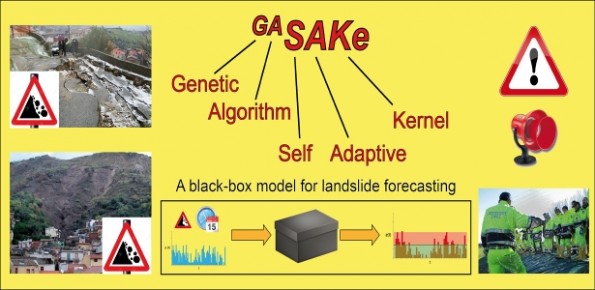Forecasting rainfall-induced landslides
A new model to predict the time of occurrence of rainfall-induced landslides, based on genetic algorithms

We developed GASAKe, Genetic Algorithm-based Self-Adaptive Kernel, a new model to predict the time of occurrence of rainfall induced landslides.
GASAKe predicts the time of occurrence of single landslides or groups of similar landslides, both shallow and deep-seated, using a threshold than when exceeded determines the initiation of the landslides. The triggering threshold is defined using historical information on rainfall and landslides.
GASAKe is a “black box” model based on the assumption that the stability of a slope depends on rainfall in a linear and stationary way. Compared to other models, GASAKe uses a discreet moving window (a “kernel”) and implements a “self adaptive” calibration procedure based on “genetic algorithms”.
Exploiting the discrete kernel, GASAKe is flexible and suitable to simulate very complex interactions between rainfall and slope stability. The self adaptive procedure allows GASAKe to modify iteratively the shape of the kernel, based on the modelling conditions.
Main outputs of GASAKe include a “mobilizing function” that allows to predict the time of occurrence of one or more landslides, and a critical rainfall initiation threshold.
Results
We have successfully applied GASAKe to predict medium-size landslides in Calabria (San Benedetto Ullano, Acri, San Fili) and shallow landslides in the Sorrento Peninsula, Campania.
Calibration and validation of GASAKe in the different study areas provided encouraging results, that we attribute to the performance and flexibility of GASAKe.
The functions obtained by GASAKe can be integrated in early warning systems for the possible occurrence of rainfall induced landslides.
To know more
Terranova OG, Gariano SL, Iaquinta P, Iovine GGR. 2015. GASAKe: forecasting landslide activations by a genetic-algorithms-based hydrological model. Geoscientific Model Development 8(7), 1955–1978. DOI: 10.5194/gmd-8-1955-2015.



 Contact person: stefano luigi gariano -
Contact person: stefano luigi gariano -